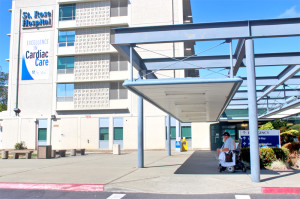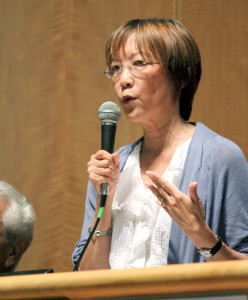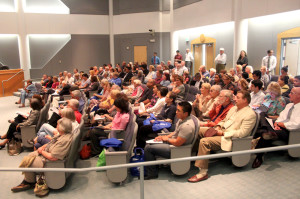
care for many of Alameda county’s poorest residents.
St. Rose Hospital in Hayward will need $6 million to keep its doors open through the end of 2012, according to Interim CEO Makoto “Mak” Nakayama at a Hayward City Hall meeting Friday. This is in addition to the $12.25 million already raised over the last eight months for the same purpose.
Half of that money – $3 million – will have to be accrued by the end of September, and the other half by the end of the 2012 if St. Rose is to continue providing its services.
Nakayama’s remarks came at the St. Rose Town Hall meeting hosted by Alameda County District Supervisor Richard Valle, designed to facilitate an arena to address the hospital’s chronic budget gaps and to help plan for the future of the hospital.
St. Rose is a private, not-for-profit hospital in Hayward, which provides numerous types of care to many of the county’s poorest residents, including emergency, cardiology, diagnostics and women’s services. Last year, the hospital saw nearly 35,000 emergency room visits, 30 percent of which were uninsured. Because a majority of its patients have inadequate insurance, if at all, St. Rose is considered a “disproportionate share hospital.”
“So much of the healthcare system in Alameda County relies on hospitals playing their role,” said Alex Briscoe, Alameda County Care Services agency director. “One of the roles of St. Rose is to see a lot of the people who can’t pay, so that other hospital systems can see the people who can afford it and can see the people who do pay.”

Chan, Informs the crowd about coming
changes to the healthcare industry.
Nakayama said St. Rose’s financial troubles boil down to one main fact: the hospital historically gets paid less per patient from both the government and private insurers than most other hospitals in the area.
About 80 percent of St. Rose patients rely on Medicare and MediCal to cover the costs of their healthcare, but the government reimburses hospitals for those patients at only a fraction of the actual cost. In addition, the hospital receives less reimbursement money from private insurers for the 12 percent of patients with private insurance, according to Nakayama.
“The biggest problem is that the payment to the hospital is really inadequate,” said Nakayama. “What’s happening now at St. Rose is that between 11 and 15 percent of the inpatients that come to the hospital are uninsured […] but we only receive about two or three percent of the revenue that’s available to take care of those patients.”
The fact that St. Rose hospital receives less money for a majority of its patients is compounded by the fact that Hayward has the highest percentage of uninsured residents in Alameda County, according to Briscoe.
Also significant is the rising cost of healthcare, which has increased at five times the average rate of wages and has doubled in the last decade.
Nakayama said the hospital administration has been working diligently to collect money owed by the government and insurers, which has been a historic problem for St. Rose. Nakayama claimed their efforts have increased collections by 10 percent, which amounts to $382 per patient, per day.

issues facing St. Rose hospital.
Many in attendance spoke about the possible negative consequences that could emanate across the county if St. Rose closes, which could force its patients to seek care elsewhere, overwhelming the other public hospitals in the area.
The fear that Hayward could be left without hospitals to serve its residents could become a reality if St. Rose’s financial situation doesn’t improve before 2014, when Kaiser will close its hospital in Hayward and move to San Leandro.
Debra Lambert, director of public affairs at Kaiser Permanente, addressed these fears, highlighting that Kaiser Hayward will still have some outpatient services, but will no longer be allowed to run its emergency room due to California’s seismic regulations.
Lambert also spoke about the pending request for $3.5 million financial aid from Kaiser to help keep St. Rose running, but stated the large hospital chain wants to see a strong long-term viability plan before more funds are contributed.
“We’ve been a part of Hayward for 50 years and St. Rose is our partner; they’re down the street from us, we see them every day,” said Lambert “Just know that we are considering your financial request.”
Briscoe said St. Rose’s long-term viability plan revolves around finding a partner to help run the hospital, also mentioning they are currently talking with a private provider and the Alameda County Health Center as a possible public provider.
“ St. Rose is a jewel and it needs to be preserved,” said Kathy Streeter, chairperson of the St. Rose Board of Trustees. “It’s an important part of this community and it has been for 50 years.”











